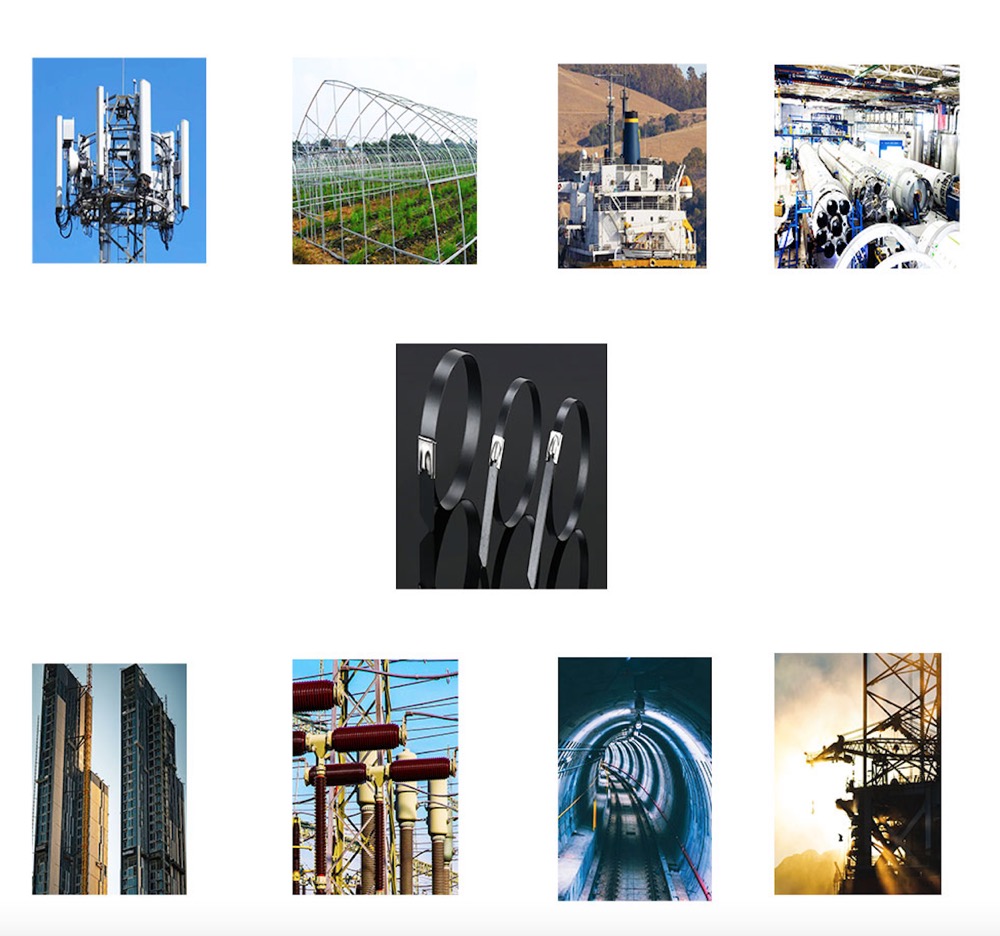Introduction:
Stainless steel cable ties are versatile and reliable fastening solutions widely used in various industries. This article aims to provide an overview of the manufacturing process, applications, and usage precautions associated with stainless steel cable ties.
Manufacturing Process:
Stainless steel cable ties undergo a well-defined manufacturing process to ensure their durability and functionality. The process typically involves the following steps:
a. Material Selection: High-quality stainless steel with excellent corrosion resistance properties is chosen for manufacturing cable ties. Common grades include 304 and 316 stainless steel.
b. Wire Drawing: Stainless steel wire is drawn through a series of dies to achieve the desired diameter and smoothness.
c. Forming: The wire is then fed into a forming machine, where it is shaped into individual cable ties. Various mechanisms, such as stamping and cutting, are employed to create the distinctive head, tail, and locking mechanism.
d. Coating (Optional): In some cases, a protective coating like nylon or polyester may be applied to the stainless steel cable ties to enhance their resistance to abrasion and provide insulation.
e. Quality Control: Strict quality control measures are implemented throughout the manufacturing process to ensure that each cable tie meets industry standards and specifications.
Applications:
Stainless steel cable ties find applications in a wide range of industries due to their durability and resistance to harsh environments. Some common applications include:
a. Industrial Sector: Cable management in manufacturing plants, electrical installations, and heavy machinery.
b. Construction Industry: Securing wires and cables in buildings, bridges, and tunnels.
c. Transportation: Bundling cables and hoses in automotive, aerospace, and maritime industries.
d. Oil and Gas: Withstanding extreme temperatures and corrosive conditions in offshore platforms and pipelines.
e. Telecommunications: Organizing and securing cables in data centers, telecommunication networks, and server rooms.
Usage Precautions:
While stainless steel cable ties offer numerous benefits, certain precautions should be followed to ensure their safe and effective usage:
a. Proper Installation: Ensure the cable tie is correctly aligned and tightened, providing adequate tension without over-tightening, which can damage cables or restrict their movement.
b. Temperature Considerations: Stainless steel cable ties have a wide temperature range, but verify that they are suitable for the intended application’s temperature extremes.
c. Environmental Factors: Assess the environment for potential exposure to chemicals, UV radiation, or moisture, and select cable ties with appropriate resistance properties.
d. Sharp Edges: Be cautious when handling cut cable tie ends, as they can have sharp edges. Wear protective gloves if necessary.
e. Compatibility: Verify the size and strength requirements of the application, ensuring the chosen cable tie meets or exceeds these specifications.
Conclusion:
Stainless steel cable ties offer a reliable and durable fastening solution for various industries. Understanding the manufacturing process, exploring the diverse applications, and adhering to the recommended usage precautions will ensure the optimal performance and longevity of stainless steel cable ties in different environments.
Post time: Jun-15-2023







